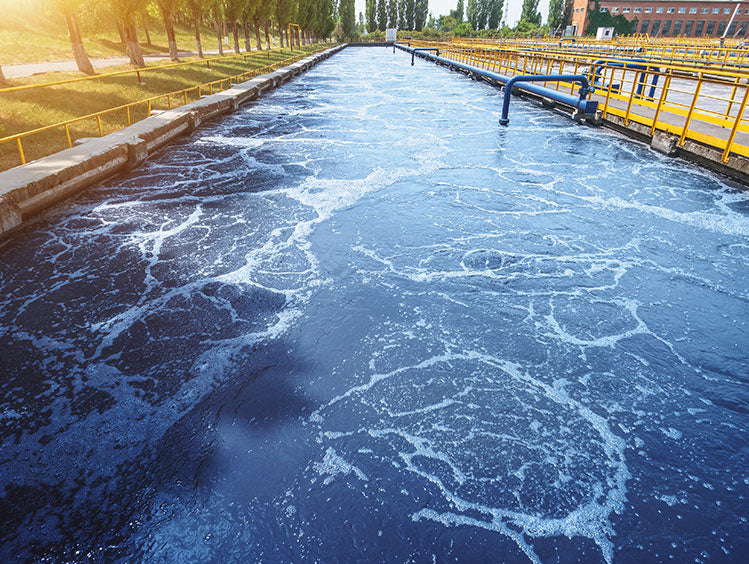
Revolutionizing Resource Management with IoT Water Conservation Systems
Share
In our fast-paced technological age, integrating IoT water conservation systems isnt merely an option; its essential. With global water scarcity becoming an ever-pressing issue, tech innovators and enthusiasts are looking towards the potential of the Internet of Things (IoT) as a solution. The combination of IoT and water conservation is transforming the way we handle this vital resource and offers a glimpse into a future where technology seamlessly integrates with sustainability.

What is IoT in Water Conservation?
The IoT (Internet of Things) concept centers around connecting everyday devices to the internet, enabling them to exchange data. In the realm of water conservation, IoT systems comprise a network of sensors, meters, and software applications that collaborate to monitor and manage water usage effectively. Their primary goal is to supply real-time data and insights, allowing users to make educated decisions about their water consumption and conservation strategies.
For example, IoT water conservation systems can assess soil moisture levels, identify leaks in piping, and regulate irrigation schedules based on weather predictions. By harnessing this technology, urban planners, farmers, and homeowners can enhance water usage, minimize waste, and contribute to a more sustainable future.
Advantages of IoT Water Conservation Systems
Instant Monitoring and Data Insights
One of the key benefits of IoT water conservation systems is their capacity for real-time data provision and analysis. This functionality allows users to track water usage trends, spot inefficiencies, and promptly implement corrective actions. Utilizing advanced analytics and machine learning algorithms, these systems can forecast consumption patterns and offer tailored water conservation recommendations.
Leak Detection and Mitigation
Water leaks represent a major source of waste and can lead to significant financial repercussions. Equipped with sensors, IoT water conservation systems can detect leaks in real time, notifying users to take swift action. By addressing leaks before they worsen, these solutions save both water and finances, making them invaluable for homeowners and businesses alike.
Enhanced Irrigation Management
In agricultural and landscaping settings, IoT water conservation systems enable improved irrigation management. By evaluating soil moisture levels, weather conditions, and specific plant requirements, these systems can automate watering schedules, ensuring that plants receive the optimal amount of water precisely when they need it. This level of precision conserves water, boosts crop production, and minimizes the risk of overwatering.
Challenges and Future Outlook
Despite the many advantages, adopting IoT water conservation systems comes with its own set of challenges. Data privacy, connectivity issues, and the initial costs of implementation can inhibit widespread use. However, as technology evolves and costs decrease, these barriers are expected to lessen.
Looking towards the future, the outlook for IoT water conservation systems is bright. Continuous innovation will likely make these systems more user-friendly and accessible, encouraging more individuals to engage in water conservation efforts. Additionally, as awareness about water scarcity heightens, governments and organizations are expected to invest more in IoT solutions, fostering further development and expansion.
Conclusion: Embracing a Technology-Driven Water-Saving Future
To sum up, IoT water conservation systems symbolize a transformative strategy for managing one of our most crucial resources. By leveraging advanced technology, these systems provide sustainable solutions to water scarcity, setting the stage for a future characterized by efficient and responsible resource management. For tech enthusiasts and professionals, the application of IoT in water conservation presents an exciting realm of possibilities for innovation and meaningful impact.
To delve deeper into water-saving strategies, visit this informative guide on water-saving strategies. You might also be interested in exploring smart leak sensors, smart water management, and innovations in conservation.

FAQs
What exactly are IoT water conservation systems?
IoT water conservation systems utilize Internet of Things technology to efficiently monitor and manage water usage. These systems implement sensors, meters, and software tools to deliver real-time data and insights for optimal management.
How do these systems assist with leak detection?
Equipped with sensors that monitor water flow and pressure levels, IoT systems can detect leaks in real-time. They alert users immediately upon detection, facilitating prompt action to prevent water waste.
How does IoT enhance agricultural water management?
In agricultural applications, IoT systems fine-tune irrigation management by analyzing soil moisture, climate conditions, and plant needs, enabling precise water delivery, reducing waste, and boosting crop yield.
Additionally, for more information on water conservation, check out this Wikipedia page.
